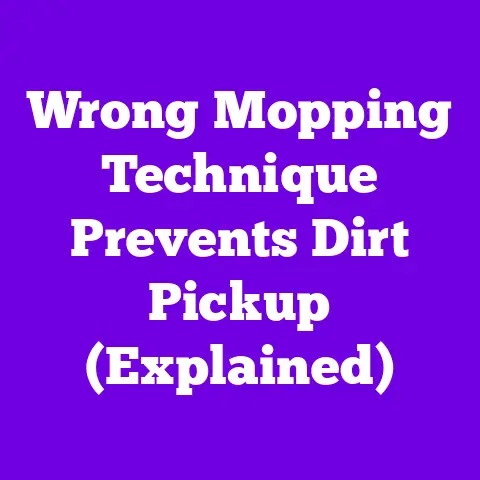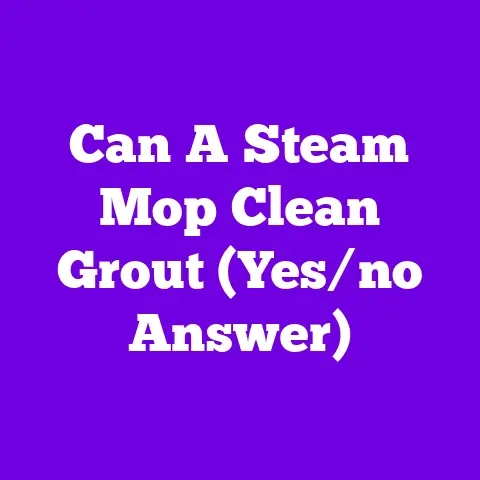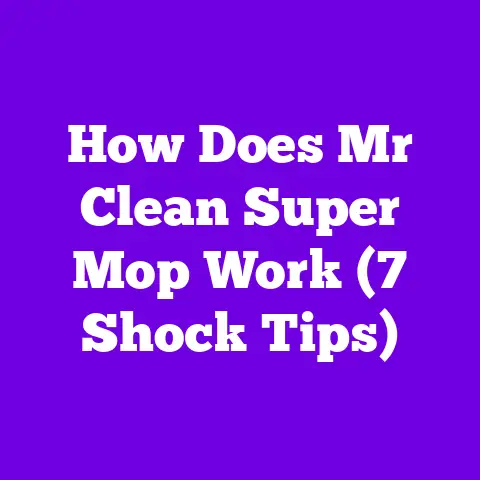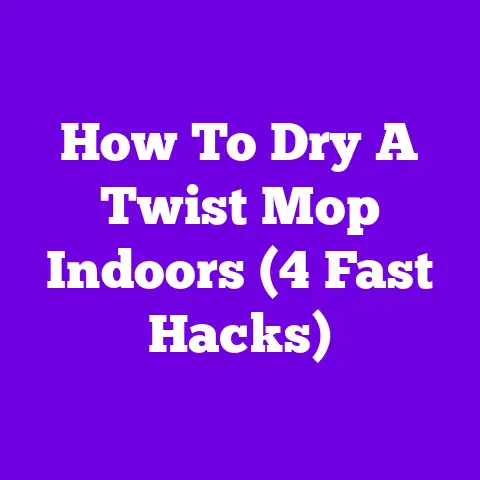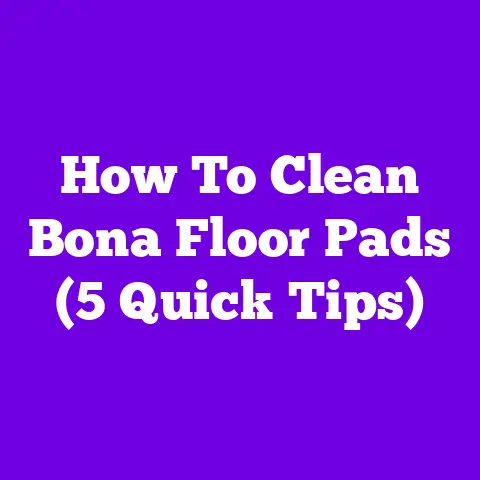When Cleaning Floors Sweep Or Mop First (Must Know)
Imagine standing in your living room, gazing at the floor covered in dust and crumbs. You might think, “Should I sweep or mop first?” It’s a question I’ve heard countless times, and today, I’ll dive into it with stories, tips, and insights from my years of experience in housekeeping.
Why the Order of Sweeping and Mopping Matters
Cleaning floors effectively involves a strategic approach. If you’ve ever mopped a floor only to find it still dirty afterward, you’re not alone. Sweeping removes loose debris, making the mopping process more effective. Let’s explore why this order is crucial.
Step 1: Sweeping
Materials Needed:
- Broom or dust mop
- Dustpan
- Vacuum cleaner (optional)
Detailed Steps:
- Select Your Tool: Choose between a broom or a dust mop. Personally, I prefer a dust mop for larger areas because it covers more ground quickly.
- Begin at the Edges: Start sweeping from the edges of the room towards the center. This ensures that you gather all debris without missing spots.
- Use a Dustpan: Regularly sweep gathered debris into a dustpan. For stubborn dirt, a vacuum can be more efficient.
- Check for Missed Spots: Pay special attention to corners and under furniture, where dust likes to hide.
Helpful Tips:
- Sweep slowly to avoid creating airborne dust.
- Use a soft-bristled broom for delicate flooring to prevent scratches.
Common Mistakes:
- Overlooking corners or difficult spots.
- Ignoring debris under rugs or heavy furniture.
Step 2: Mopping
Materials Needed:
- Mop (sponge or microfiber)
- Bucket
- Appropriate floor cleaner
Detailed Steps:
- Prepare Cleaning Solution: Fill your bucket with water and add floor cleaner according to instructions. I find warm water helps dissolve dirt better.
- Wring Out Excess Water: A damp mop is more effective than a wet one. Too much water can damage certain floors like hardwood.
- Mop in Sections: Work on small sections, starting from one corner and moving toward the exit to avoid stepping on wet areas.
- Rinse Mop Frequently: To prevent spreading dirt, rinse your mop often.
- Dry the Floor: Use a dry mop or towel if needed to ensure no slippery spots remain.
Helpful Tips:
- Warm water enhances cleaning effectiveness.
- Change the cleaning solution if it becomes cloudy or dirty.
Common Mistakes:
- Oversaturating the floor can lead to warping or damage.
- Failing to rinse the mop can spread dirt rather than remove it.
Finishing Touches
After mopping, clean your mop and bucket thoroughly to prevent mold or odor build-up. Store them properly to ensure they’re ready for the next use.
Safety Considerations
Floors can be slippery after mopping. Ensure children and pets are kept away until surfaces are dry. Opt for non-toxic cleaners if there are allergies or sensitivities in your household.
Personal Experiences and Insights
A few years ago, I was in a rush to clean my kitchen before guests arrived. I skipped sweeping and went straight to mopping. Big mistake! The floor ended up smeared with wet crumbs, leading to more cleaning later. Since then, I’ve made sweeping a mandatory first step, even when pressed for time.
Advanced Techniques for Different Floor Types
Different floors have distinct needs. Here’s how you can tailor your cleaning approach:
Hardwood Floors
- Sweeping: Use a dust mop or vacuum with a soft brush attachment.
- Mopping: Use a damp mop with a cleaner specifically designed for wood floors.
Tile Floors
- Sweeping: Brooms work well here; focus on grout lines where debris can settle.
- Mopping: A mixture of water and vinegar is effective for tiles but avoid vinegar on stone tiles.
Laminate Floors
- Sweeping: A soft broom or dry mop prevents scratches.
- Mopping: Use minimal water and laminate-friendly cleaners to avoid swelling.
Eco-Friendly Cleaning Options
If you’re environmentally conscious, consider these alternatives:
- Vinegar and Water Solution: Effective on most surfaces except stone.
- Lemon Juice Cleaner: Great for freshening up floors naturally.
- Baking Soda Paste: Useful for spot cleaning stubborn stains.
FAQs
Q: Can vacuuming replace sweeping?
A: Yes, especially if your vacuum has a hard floor setting. It’s efficient for picking up fine dust and debris.
Q: What frequency is ideal for sweeping and mopping?
A: High-traffic areas benefit from daily sweeping and weekly mopping. Less-used rooms may require less frequent attention.
Q: Why does my floor feel sticky after mopping?
A: This may be due to residue from cleaning products. Rinsing with clean water can help eliminate this.
Q: Is it necessary to use different cleaners for different floors?
A: Absolutely! Using the correct cleaner ensures no damage occurs to specific flooring types.
With these insights, you’re equipped to tackle any floor cleaning challenge head-on. Remember, sweeping first lays the groundwork for spotless results when mopping. Happy cleaning!

